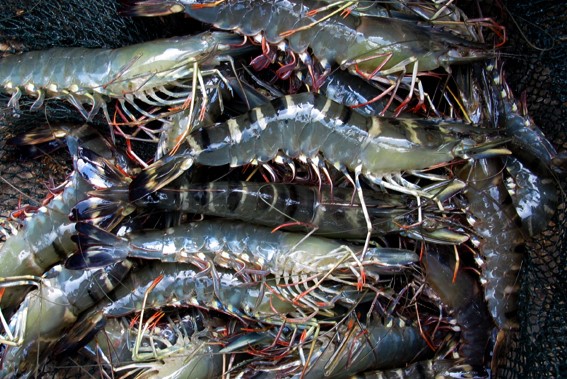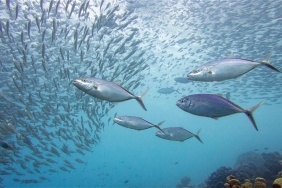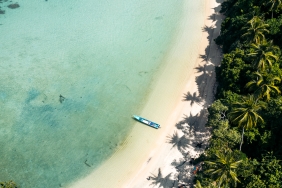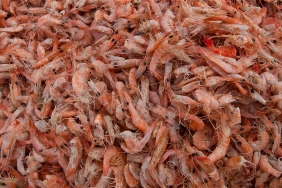INTRODUCING TIGER SHRIMP ASC AND BMP CERTIFICATION TO PINRANG FARMERS
By: Zulkarnain (Faslok AIP Shrimp Cultivation - Pinrang) and Idham Malik (Aquaculture Staff)
The socialization of Aquaculture Stewardship Council (ASC) and Better Management Practice (BMP) of Wind Shrimp Aquaculture conducted on May 20-21, was a collaboration between WWF-Indonesia and PT Bogatama Marinusa (Bomar), a member company of Seafood Savers to the farm workers of H. Tantang, the main supplier of PT Bomar. Located in Pallameang Village, Mattirosompe Sub-district, Pinrang Regency, South Sulawesi, the 15 participants consisted of 13 farmers and two local fisheries extension officers. This socialization is the first step in assisting farmers towards responsible and sustainable tiger shrimp farming, by following ASC Shrimp standards and Tiger Shrimp BMPs.
On the first day, Muhammad Yusuf (Fisheries Science WWF-Indonesia) and Idham Malik (Aquaculture Staff) explained gradually about ASC Shrimp. The explanation starts from the rationale and history, followed by a brief explanation of the seven principles in ASC Shrimp which includes; aspects of the legality of the pond, the impact of cultivation on the environment, the impact of cultivation on the social life of the surrounding community, cultivation practices that pay attention to the fate of workers, cultivation practices that pay attention to the rights of shrimp life by preventing and treating diseases, cultivation practices that maintain the survival of shrimp stocks in nature, and cultivation practices with efficient and responsible food and energy resources.
In addition, the actual condition of the H. Tantang pond area based on ASC Shrimp standards was explained. In general, shrimp farming is carried out using traditional methods with low stocking density and simple technology. However, to obtain an ASC Shrimp certificate, there are several things that must be met, namely the availability of BEIA (Biodiversity Ecosystem Impact Assessment) reports to see the impact of farming on the environment, the availability of PSIA (Participatory Social Impact Assessment) reports to see the impact of farming on surrounding communities, the availability of information boards on the public, the availability of Standard Operating Programs (SOPs) of cultivation, water quality records, and the availability of records of cultivation activities and fry documents.
On the second day, Muhammad Yusuf invited farmers to reflect on tiger shrimp farming practices. Currently, farmers apply a double or follow-up system in stocking fry and do not do a total harvest. This is due to the size of the farm, which makes it difficult for farmers to completely remove and replenish water. According to M. Yusuf, this practice can reduce the survival rate of shrimp (Survival Rate), because there are variations in the size of shrimp in the water column. This can lead to cannibalism or predation of small shrimp by larger shrimp. Another practice that must be considered is the use of chemical pesticides for pest eradication.
At the end of the activity, farmers were introduced to the use of water quality measuring devices, namely DO Meter to measure oxygen levels in water, HandRfractometer to measure salt levels in water, pH meter to measure acid-base levels in water and Soil Tester to measure acid-base levels in soil. Hopefully, farmers can measure water and soil conditions, which are good for shrimp growth. With this training on ASC and BMP, it is expected that shrimp farmers suppliers PT Bomar understand environmental protection, as well as can increase shrimp productivity in their ponds.





